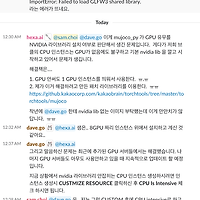<mujoco model="ant">
<compiler angle="degree" coordinate="local" inertiafromgeom="true"/>
<option integrator="RK4" timestep="0.01"/>
<custom>
<numeric data="0.0 0.0 0.55 1.0 0.0 0.0 0.0 0.0 1.0 0.0 -1.0 0.0 -1.0 0.0 1.0" name="init_qpos"/>
</custom>
<default>
<joint armature="1" damping="1" limited="true"/>
<geom conaffinity="0" condim="3" density="5.0" friction="1 0.5 0.5" margin="0.01" rgba="0.8 0.6 0.4 1"/>
</default>
<asset>
<texture builtin="gradient" height="100" rgb1="1 1 1" rgb2="0 0 0" type="skybox" width="100"/>
<texture builtin="flat" height="1278" mark="cross" markrgb="1 1 1" name="texgeom" random="0.01" rgb1="0.8 0.6 0.4" rgb2="0.8 0.6 0.4" type="cube" width="127"/>
<texture builtin="checker" height="100" name="texplane" rgb1="0 0 0" rgb2="0.8 0.8 0.8" type="2d" width="100"/>
<material name="MatPlane" reflectance="0.5" shininess="1" specular="1" texrepeat="60 60" texture="texplane"/>
<material name="geom" texture="texgeom" texuniform="true"/>
</asset>
<worldbody>
<light cutoff="100" diffuse="1 1 1" dir="-0 0 -1.3" directional="true" exponent="1" pos="0 0 1.3" specular=".1 .1 .1"/>
<geom conaffinity="1" condim="3" material="MatPlane" name="floor" pos="0 0 0" rgba="0.8 0.9 0.8 1" size="40 40 40" type="plane"/>
<body name="torso" pos="0 0 0.75">
<camera name="track" mode="trackcom" pos="0 -3 0.3" xyaxes="1 0 0 0 0 1"/>
<geom name="torso_geom" pos="0 0 0" size="0.25" type="sphere"/>
<joint armature="0" damping="0" limited="false" margin="0.01" name="root" pos="0 0 0" type="free"/>
<body name="front_left_leg" pos="0 0 0">
<geom fromto="0.0 0.0 0.0 0.2 0.2 0.0" name="aux_1_geom" size="0.08" type="capsule"/>
<body name="aux_1" pos="0.2 0.2 0">
<joint axis="0 0 1" name="hip_1" pos="0.0 0.0 0.0" range="-30 30" type="hinge"/>
<geom fromto="0.0 0.0 0.0 0.2 0.2 0.0" name="left_leg_geom" size="0.08" type="capsule"/>
<body pos="0.2 0.2 0">
<joint axis="-1 1 0" name="ankle_1" pos="0.0 0.0 0.0" range="30 70" type="hinge"/>
<geom fromto="0.0 0.0 0.0 0.4 0.4 0.0" name="left_ankle_geom" size="0.08" type="capsule"/>
</body>
</body>
</body>
<body name="front_right_leg" pos="0 0 0">
<geom fromto="0.0 0.0 0.0 -0.2 0.2 0.0" name="aux_2_geom" size="0.08" type="capsule"/>
<body name="aux_2" pos="-0.2 0.2 0">
<joint axis="0 0 1" name="hip_2" pos="0.0 0.0 0.0" range="-30 30" type="hinge"/>
<geom fromto="0.0 0.0 0.0 -0.2 0.2 0.0" name="right_leg_geom" size="0.08" type="capsule"/>
<body pos="-0.2 0.2 0">
<joint axis="1 1 0" name="ankle_2" pos="0.0 0.0 0.0" range="-70 -30" type="hinge"/>
<geom fromto="0.0 0.0 0.0 -0.4 0.4 0.0" name="right_ankle_geom" size="0.08" type="capsule"/>
</body>
</body>
</body>
<body name="back_leg" pos="0 0 0">
<geom fromto="0.0 0.0 0.0 -0.2 -0.2 0.0" name="aux_3_geom" size="0.08" type="capsule"/>
<body name="aux_3" pos="-0.2 -0.2 0">
<joint axis="0 0 1" name="hip_3" pos="0.0 0.0 0.0" range="-30 30" type="hinge"/>
<geom fromto="0.0 0.0 0.0 -0.2 -0.2 0.0" name="back_leg_geom" size="0.08" type="capsule"/>
<body pos="-0.2 -0.2 0">
<joint axis="-1 1 0" name="ankle_3" pos="0.0 0.0 0.0" range="-70 -30" type="hinge"/>
<geom fromto="0.0 0.0 0.0 -0.4 -0.4 0.0" name="third_ankle_geom" size="0.08" type="capsule"/>
</body>
</body>
</body>
<body name="right_back_leg" pos="0 0 0">
<geom fromto="0.0 0.0 0.0 0.2 -0.2 0.0" name="aux_4_geom" size="0.08" type="capsule"/>
<body name="aux_4" pos="0.2 -0.2 0">
<joint axis="0 0 1" name="hip_4" pos="0.0 0.0 0.0" range="-30 30" type="hinge"/>
<geom fromto="0.0 0.0 0.0 0.2 -0.2 0.0" name="rightback_leg_geom" size="0.08" type="capsule"/>
<body pos="0.2 -0.2 0">
<joint axis="1 1 0" name="ankle_4" pos="0.0 0.0 0.0" range="30 70" type="hinge"/>
<geom fromto="0.0 0.0 0.0 0.4 -0.4 0.0" name="fourth_ankle_geom" size="0.08" type="capsule"/>
</body>
</body>
</body>
</body>
</worldbody>
<actuator>
<motor ctrllimited="true" ctrlrange="-1.0 1.0" joint="hip_4" gear="150"/>
<motor ctrllimited="true" ctrlrange="-1.0 1.0" joint="ankle_4" gear="150"/>
<motor ctrllimited="true" ctrlrange="-1.0 1.0" joint="hip_1" gear="150"/>
<motor ctrllimited="true" ctrlrange="-1.0 1.0" joint="ankle_1" gear="150"/>
<motor ctrllimited="true" ctrlrange="-1.0 1.0" joint="hip_2" gear="150"/>
<motor ctrllimited="true" ctrlrange="-1.0 1.0" joint="ankle_2" gear="150"/>
<motor ctrllimited="true" ctrlrange="-1.0 1.0" joint="hip_3" gear="150"/>
<motor ctrllimited="true" ctrlrange="-1.0 1.0" joint="ankle_3" gear="150"/>
</actuator>
</mujoco>


